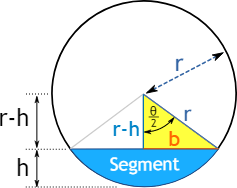ninjagrant
New member
- Joined
- Jul 15, 2022
- Messages
- 1
A truck driver’s gas gauge is broken. He knows he has a 150 gallon cylindrical tank. He takes a stick and inserts into the tank and measures that it was 1/3 high. If he drives 60mph and gets 20 mpg at that speed, how many miles can he travel?

